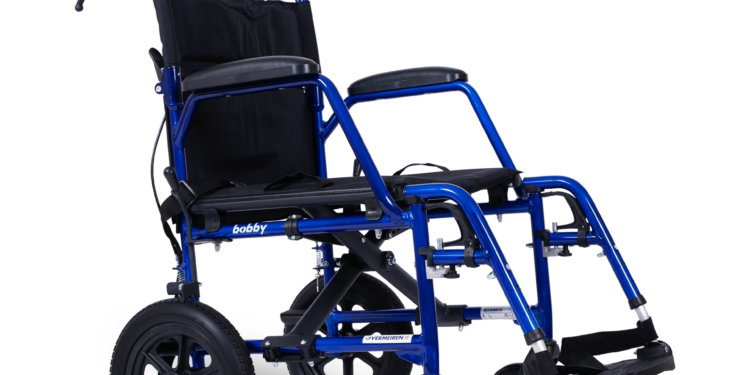Traveling can be a liberating experience, and having a foldable wheelchair makes it more convenient than ever for individuals with mobility needs. These compact and portable wheelchairs are designed to make transportation smoother, whether you’re flying internationally, boarding a train, or just taking a road trip. However, air travel still presents unique challenges—from navigating airport security to understanding airline policies.
This guide provides essential tips to ensure a hassle-free travel experience with your foldable wheelchair, covering everything from airline procedures to smart packing techniques.
1. Know Your Rights as a Passenger with Reduced Mobility
Before you book your flight, it’s crucial to be aware of your rights under the law. In India, the Rights of Persons with Disabilities Act, 2016 ensures equal access to public transport, including airlines. Globally, air travel is regulated by laws such as:
- U.S. Air Carrier Access Act (ACAA)
- EU Regulation (EC) No 1107/2006
These laws require airlines to provide free assistance with mobility equipment, including wheelchairs, and to allow users to bring their personal mobility aids on board.
2. Choose the Right Airline and Notify in Advance
Not all airlines handle mobility needs the same way. Before booking, check the airline’s specific wheelchair policy on their website or contact customer service. Here’s what to look for:
- Free transport of foldable wheelchairs in cargo hold
- Option to use your wheelchair up to the aircraft door
- Assistance through security and boarding
Tip: Always inform the airline at least 48 hours in advance about your mobility requirements. Many airlines require this notice to arrange assistance.
3. Understand Airport Wheelchair Protocols
When you arrive at the airport, you’ll be guided through a different check-in and boarding process. Here’s what usually happens:
- You’ll check your foldable wheelchair either at the check-in counter or at the gate.
- Some airports allow you to use your own wheelchair up to the boarding gate or aircraft door, after which it will be placed in the cargo hold.
- Upon landing, your wheelchair will be brought back to the aircraft door or baggage area, depending on the airport’s policies.
Tip: Clearly tag your wheelchair with your name and contact details, and attach “Fragile” and “This Side Up” labels to avoid damage.
4. Prepare Your Wheelchair for Travel
Even though foldable wheelchairs are travel-friendly, it’s essential to prep them for handling by airport staff:
- Fold and secure: Make sure the wheelchair is folded securely with all loose parts fastened or removed.
- Remove accessories: Take off any detachable items like cushions, joystick controls (for electric models), or baskets and pack them separately.
- Protect electronics: If it’s an electric wheelchair, disconnect and label the battery clearly. Airlines often have restrictions on lithium-ion batteries, so check their guidelines beforehand.
Pro tip: Carry a small toolkit in your checked luggage for emergency repairs.
5. Plan Your Packing Strategically
In addition to packing your wheelchair accessories, here are a few tips for your luggage:
- Use a backpack or wheeled bag you can easily manage on your own.
- Carry medical documents or prescriptions in your hand luggage, especially if you use mobility aids or medication regularly.
- Bring a travel cushion or support pad if you’ll be sitting for extended periods.
6. Navigating Security with a Wheelchair
Security checkpoints can be one of the more stressful parts of travel, but wheelchair users are not exempt. Here’s what to expect:
- A manual pat-down or screening with a handheld scanner instead of a walk-through metal detector.
- You may be asked to transfer to an airport-provided chair if your wheelchair needs to be scanned separately (though this is rare with foldable manual chairs).
Stay calm, cooperative, and communicate your comfort level and any physical limitations to the staff.
7. Know How to Advocate for Yourself
Despite best efforts, mishandling or delays can happen. Being assertive and informed helps:
- Document everything: If your wheelchair is damaged in transit, take pictures immediately and report the issue to airline staff.
- Ask for priority handling of your equipment to minimize the chance of it being misplaced or mistreated.
- Use mobility advocacy resources or airport helpdesks if you feel your rights were violated.
8. Beyond Airports: Buses, Trains, and Road Trips
While air travel gets the spotlight, foldable wheelchairs are also ideal for other travel modes:
- Trains: Indian Railways and metro systems offer wheelchair-friendly coaches and reserved seating. Carry a lightweight ramp if needed.
- Road trips: Foldable wheelchairs fit easily in car trunks. Look for accessible hotels and rest stops on your route.
- Buses: Intercity buses may not be fully accessible, but some private operators now offer wheelchair-friendly services. Always check in advance.
Final Thoughts
Traveling with a foldable wheelchair doesn’t have to be stressful. With a little preparation and the right information, you can explore the world with ease and independence. From navigating airport logistics to understanding your rights and packing smartly, these tips ensure that your journey is as smooth as your destination is exciting.
Whether you’re planning a business trip or a well-deserved vacation, a foldable wheelchair is your perfect travel companion—compact, reliable, and ready for adventure.


























